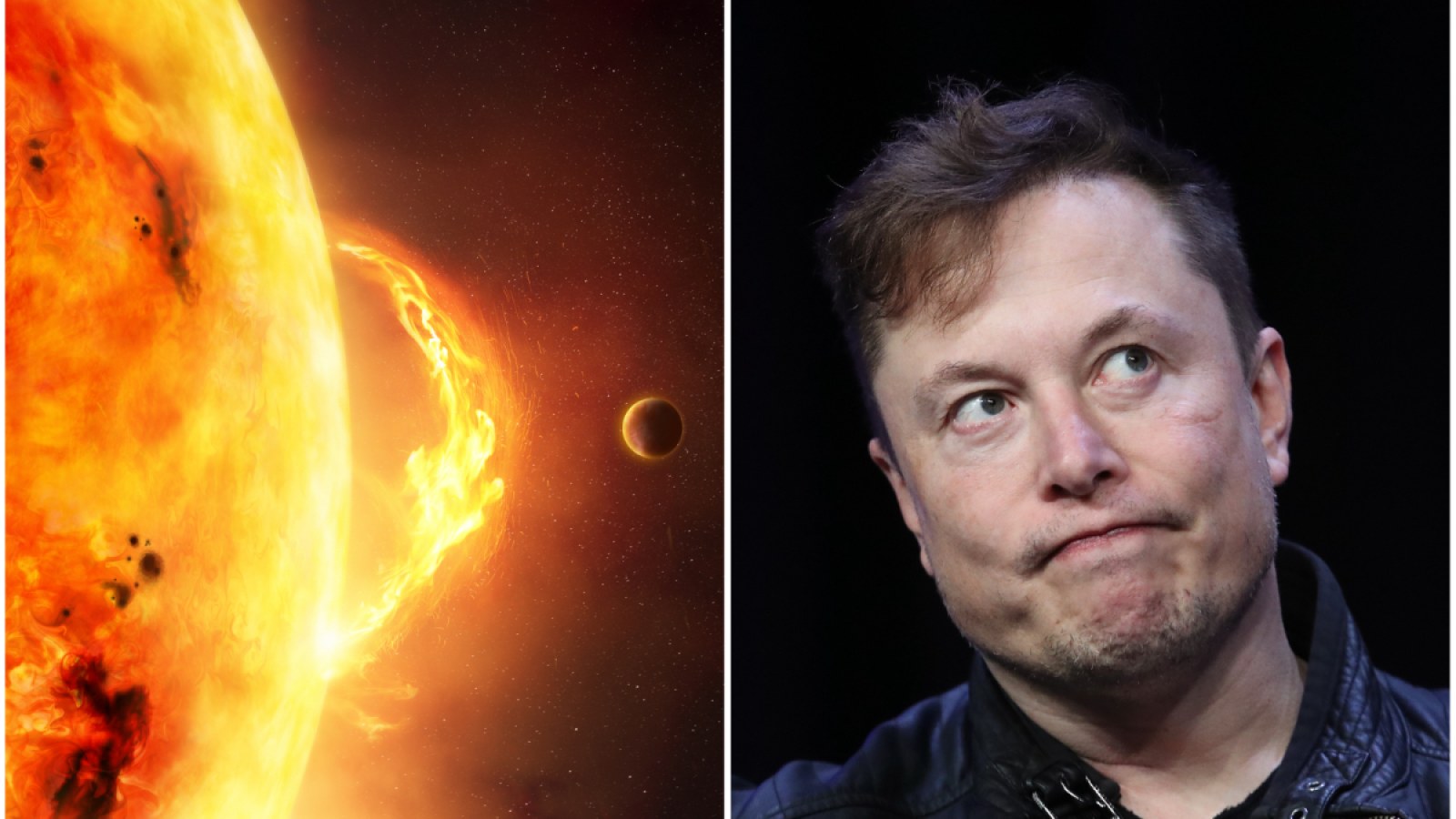Exploring the fate of Earth is a subject that grips scientists and laypeople alike, often leading to discussions steeped in a mix of facts and speculation. While the Sun will eventually expand into a red giant and potentially engulf our planet, this catastrophic event is forecasted to occur in roughly 5 billion years.
Before this, Earth will remain in a delicate balance, with life persisting under the Sun’s relatively stable luminosity. The idea that our home could face obliteration tends to ignite a flurry of apocalyptic theories, yet the evidence points to a far more distant timetable. Staying informed through authoritative sources can dispel myths and focus our collective attention on more immediate environmental and cosmic concerns.
Introduction: Exploring The Sun-earth Connection
Our planet’s existence is intimately linked to the gargantuan fireball in the sky—the Sun. This celestial giant fuels life, shapes seasons, and controls space weather. As we inch closer to 2025, speculations swirl around potential solar threats to Earth. Understanding the Sun’s role and debunking myths is essential for a clear-eyed view of our cosmic neighborhood.
The Sun’s Role In The Solar System
The Sun is the heart of our solar system, a pivotal star that keeps our planets in motion through its gravitational prowess. It is an eternal nuclear furnace, converting hydrogen into helium, releasing energy that warms our planet and sustains life. Without it, Earth would be a lifeless rock floating in the cold abyss.
- Source of Energy: Vital for photosynthesis, powering the food chain.
- Stabilizer: Its mass ensures orbital stability of the solar system’s bodies.
- Space Weather Influencer: Solar flares and coronal mass ejections affect Earth’s magnetosphere.
Popular Myths About The Sun’s Influence On Earth
In the realm of astronomical events, myths can eclipse facts, especially when it comes to the Sun’s impact on our planet. As we scrutinize these myths, it’s crucial to stick to scientific realities.
| Myth | Fact |
|---|---|
| Sudden Expansion: The Sun will engulf Earth in 2025. | Scientific evidence points to the Sun’s expansion in billions of years, not 2025. |
| Solar Apocalypse: A supernova event will wipe out Earth. | The Sun, a mid-sized star, will not explode as a supernova; its end will be a gradual transition to a white dwarf. |
As we debunk such myths, we magnify the importance of real astronomical research and understanding. The solar flare or geomagnetic storm predictions for 2025 are examples where scientific insight prevails over fear-mongering narratives.

Credit: www.youtube.com
Understanding Solar Activity And Its Effects On Earth
With doomsday predictions making headlines, it’s vital to separate fact from fiction about solar activity and its potential to affect our planet. Scientific investigations have revealed that the Sun, although largely stable, undergoes dynamic changes that can influence Earth in various ways. Understanding these solar phenomena is key to assessing whether they pose any real threat to our world, particularly as we approach the year 2025.
Solar Flares And Coronal Mass Ejections (cmes)
Solar flares and Coronal Mass Ejections (CMEs) are two significant solar events. Solar flares are intense bursts of radiation that can disrupt radio communication and navigation systems. On the other hand, CMEs are vast clouds of plasma and magnetic fields ejected from the Sun’s corona, potentially causing geomagnetic storms upon reaching Earth.
- Solar Flares: Sudden, intense radiation bursts.
- CMEs: Large expulsions of plasma and magnetic fields.
The Impact Of Solar Activity On Earth’s Climate And Technology
Earth’s climate can be affected by changes in solar irradiance linked to solar activity. While these fluctuations are nominal, they can contribute to climate variations over extended periods. As for technology, solar activity poses a tangible threat, particularly to power grids and satellite operations.
| Effect on Climate | Effect on Technology |
|---|---|
| Minor climate changes, potentially influence global warming patterns. | Disruption of power grids, causing widespread blackouts. |
| Altering atmospheric circulation patterns. | Affecting satellite navigation and communication systems. |
The Life Cycle Of The Sun: From Birth To Death
Every star has a life story, and our Sun is no exception. The fiery ball at the center of our solar system goes through a life cycle spanning billions of years. Beginning as a mere cloud of gas and dust, it has since become the heart of our solar system, supporting life on Earth and governing the rhythms of our day-to-day existence. In this section, we’ll explore the current stage of the Sun’s life and what the future holds for this celestial giant as it edges toward its inevitable demise.
Overview Of The Sun’s Current Stage
Currently, our Sun is in the stable phase of its life cycle known as the Main Sequence. During this period, the Sun steadily fuses hydrogen into helium in its core, releasing the energy that warms our planet. This hydrogen-burning phase is a relatively peaceful era for stars of this type, and it’s expected to last for another five billion years. Despite occasional outbursts like solar flares and coronal mass ejections, the Sun’s current stage is characterized by remarkable stability. Even though 2025 might seem significant in human terms, it is but a fleeting moment in the lifespan of the Sun.
What Happens When a Star Like the Sun Ends Its Life Cycle?
What Happens When A Star Like The Sun Ends Its Life Cycle?
As the Sun exhausts its hydrogen fuel, it won’t go quietly into the night. Instead, it will embark on a series of transformative events. It will swell into a Red Giant, engulfing the inner planets, possibly even Earth. Here is a rundown of the stages this transformation will entail:
- Red Giant Phase: The Sun’s outer layers will expand, and as the core contracts, it will achieve temperatures hot enough to fuse helium into heavier elements.
- Planetary Nebula: The outer layers of the red giant will be pushed off into space, forming an intricately patterned shell of gas and dust.
- White Dwarf: What remains of the Sun’s core will eventually cool and fade into a white dwarf, a dense, dim remnant of a once-mighty star.
This finale to the Sun’s life story will occur over billions of years. The death of our Sun will have profound effects on the solar system, but, for now, Earth remains safely ensconced in the Sun’s nurturing glow. Rest assured, in the year 2025, the Sun is expected to continue shining as per usual, with no cataclysmic end in sight.
Analyzing The 2025 ‘doomsday’ Claim
Analyzing the 2025 ‘Doomsday’ Claim stirs the imagination and feeds the appetite of conspiracy theorists and apocalyptic alarmists. With a myriad of predictions swirling around the internet, the idea that the Sun will destroy Earth in just a few years is bound to cause a stir. But where did this worrying concept originate, and what does science have to say about it? Breaking down the facts from the fiction is vital in understanding the likelihood of a 2025 solar catastrophe.
Origins And Spread Of The 2025 Solar Destruction Myth
The 2025 Solar Destruction Myth has taken root in the fertile soil of online forums and social media platforms. Often, such claims are based on misinterpretations of ancient prophecies, misunderstood scientific data, or outright fabrications designed to garner clicks and attention. The storytelling nature of the myth captivates readers, spreading virally as each person shares their heightened concern over the impending doom.
- Misattributed Predictions: Citing sources ranging from Nostradamus to modern-day astrologers, the myth often borrows credibility from historical figures.
- Scientific Misinformation: Incorrect or exaggerated interpretations of solar activity reports, such as solar flares and sunspots, add to the myth’s believability.
- Digital Echo Chambers: Confirmation bias plays a role in the spread as individuals search for evidence that supports their fears.
Scientific Evidence Against The Imminent Destruction Scenario
When diving into the scientific evidence, the 2025 ‘Doomsday’ claim loses its footing. Authoritative sources such as NASA provide insights into the Sun’s lifecycle, which contradicts the notion of imminent destruction.
| Solar Phenomenon | Expected Timeline | Impact on Earth |
|---|---|---|
| Solar Flares | Regular Occurrence | Minimal (with potential for electronic disturbances) |
| Coronal Mass Ejections (CMEs) | Can Happen Anytime | Minimal to Moderate (Potential for geomagnetic storms) |
| Sun’s Red Giant Phase | Approximately 5 Billion Years | Will Eventually Engulf the Earth |
The transition of the Sun into a Red Giant, which could spell the end of our planet, is an event estimated to occur in about 5 billion years. Not only does this timeline starkly oppose the 2025 prediction, but the gradual changes leading up to this phase are well-understood and monitored by scientists worldwide.
Current solar observations confirm that the star at the center of our solar system remains stable. The fluctuations in solar activity are part of an 11-year cycle called the solar cycle, which is predictable and far from catastrophic. Studies show no indication of any unusual activity that would support a 2025 destruction scenario.
The Role Of Media And Pseudoscience
Welcome to an exploration of the role of media and pseudoscience in spreading fears about cosmic calamities. Of late, there’s been incessant buzz around the idea that the Sun might destroy Earth in 2025, a claim that has caused quite a stir among the public. But what is the truth behind these sensational headlines? As responsible consumers of information, it’s crucial to analyze the situation through the lens of scientific evidence and media literacy.
How Misinformation Propagates Among The Public
Misinformation thrives in an online environment where sensational headlines get clicks and facts often take a backseat to hype. The assertion that the Sun could obliterate Earth in a few short years is a textbook example of how unfounded claims can spread like wildfire through social media, blogs, and even traditional news outlets thirsty for viewership.
Digital media platforms leverage algorithms that prioritize engagement, inadvertently skewing towards content that provokes fear or surprise—even when that content is misleading. As a result, pseudoscientific claims gain momentum, bypassing the scrutiny of scientific review and tapping into the deep well of our collective anxieties about the future.
To illustrate this phenomenon, let’s consider the journey of misinformation:
- An eye-catching, albeit unfounded, article claims the Sun’s impending doom.
- The article gets shared across social media platforms, often without critical examination.
- As the claim gains traction, it’s picked up by more websites, creating a snowball effect.
- Credulous individuals echo these sentiments in their online and offline conversations, reinforcing the falsehood.
- This repetition gives the misinformation apparent legitimacy, making it more difficult to debunk.
Confronting Pseudoscience With Critical Thinking And Scientific Literacy
The antidote to the viral spread of pseudoscience is a healthy dose of critical thinking and scientific literacy. Readers must cultivate skepticism when encountering dramatic claims, especially those forecasting apocalyptic events with precise deadlines like 2025. Instead of accepting sensational stories at face value, it’s imperative to evaluate the source, cross-check facts, and understand the scientific consensus on the topic.
By promoting educational initiatives that underscore the scientific method and the value of peer-reviewed research, society can build a populace better equipped to challenge spurious information. Here are some critical steps individuals can take:
- Question the credibility of the source and the author’s expertise on the subject matter.
- Look for evidence supporting the claim and check whether it has been published in reputable scientific journals.
- Seek out expert opinion and consensus within the scientific community.
- Become informed on how science works and why the peer review process is critical for validating research.
- Engage in discussions that advocate for evidence-based perspectives, not fear-based speculation.
As we move forward, it’s clear that the responsibility of discerning truth from fiction falls on both the media and the individual. By adhering to the principles of scientific inquiry and responsible journalism, and by educating ourselves, we can ensure that our outlook on the future, solar-related or otherwise, is illuminated not by the false flames of scaremongering but by the steady light of facts.

Credit: www.youtube.com
What Can We Really Expect From The Sun In 2025?
The thought of the Sun destroying our beloved Earth has always been a staple of science fiction stories, but is it a concern for us in the near future, specifically in 2025? While the notion makes for a thrilling plotline, the scientific community assures us that such catastrophic events are not on the immediate horizon. Instead, the focus turns to the Sun’s natural cycle of activity, which has significant implications for space weather and, by extension, our technologically dependent society.
Projected Solar Activity In 2025
The Sun goes through an 11-year cycle, with periods of both high and low activity. As we approach 2025, we are anticipating the rise towards the next solar maximum, typically marked by an increase in sunspots, solar flares, and coronal mass ejections (CMEs). While the idea of intensified solar activity may sound ominous, it’s a regular part of our Sun’s behavior. Predictions for 2025 suggest we are not heading toward an abnormal peak in solar activity but rather a moderate uptick that is well within the expected limits of our star’s cyclical nature.
Precautionary Measures And Space Weather Predictions
Understanding the Sun’s potential impact on Earth is critical, particularly as we grow ever more reliant on satellite-based technology. Space weather forecasts are akin to meteorological reports, providing crucial data to satellite operators, power grid managers, and even airline pilots. In 2025, we expect space agencies and meteorological bureaus to enhance their vigilance, employing advanced models and satellite observations to provide accurate predictions. These precautionary measures will include:
- Monitoring and forecasting solar flare activity
- Tracking CMEs and assessing the potential geomagnetic impacts
- Implementing protective protocols for satellites and power systems
- Adjusting flight routes to reduce radiation exposure for aircraft and passengers
With continued investment in space weather research and a proactive approach, we can mitigate the risks associated with our Sun’s activity peaks. The headline ‘Will the Sun Destroy Earth in 2025?’ may capture attention, yet the reality is far less sensational but equally fascinating. Our focus remains steadfast on comprehending and planning for what we can predict, ensuring that we keep Earth’s technology and infrastructure secure against the dynamic forces of our nearest star.
Conclusion: Debunking The Myths And Looking To The Future
An array of myths regarding the end of the world continue to surface, with sensational claims about the Sun destroying Earth. As we navigate through these theories, it’s essential to separate fact from fiction, grounding our understanding in scientific evidence. The purpose of this conclusion is not to stir panic, but to clarify misconceptions and provide insight into the ongoing exploration of our Sun’s activity and its implications for our planet.
The Importance Of Accurate Science Communication
Accurate scientific communication is the cornerstone in dispelling myths about potential cosmic catastrophes. With rampant misinformation, it’s critical to rely on data and analysis from reputable institutions such as NASA and the European Space Agency. These entities confirm that the Sun, while indeed evolving, will not pose such an existential threat to Earth in the near future. Providing clear, evidence-based information helps demystify the science and empowers the public to understand space phenomena correctly.
Future Prospects And Research Directions For Solar Studies
Solar research has never been more vibrant and promising. Scientists continue to deploy cutting-edge technologies like the Parker Solar Probe and the Solar Orbiter, enhancing our understanding of the Sun’s behavior. Focus areas include:
- Solar flares: Predicting their occurrence and minimizing their impact on technology.
- Coronal mass ejections: Studying these powerful eruptions aids in assessing potential disruptions to Earth’s magnetic field.
- Helioseismology: Analyzing vibrations to peer inside the Sun, improving knowledge of its internal structure.
The continued interdisciplinary research in astrophysics offers exciting avenues to study the Sun’s lifecycle, reassuring us that the sensational claims of our Sun’s immediate threat to Earth in 2025 hold no water scientifically.

Credit: www.newsweek.com
Frequently Asked Questions For Will The Sun Destroy Earth In 2025
Is Earth In Danger 2025?
No certain event places Earth in immediate danger by 2025, but ongoing environmental issues and space object monitoring remain critical.
What Will Happen To The Sun In 2025?
By 2025, the Sun will continue its current phase as a stable, middle-aged star, with no significant changes expected. It will remain in its main sequence stage, burning hydrogen into helium.
Will There Be A Solar Flare In 2024?
Solar flares occur frequently, but predicting a specific event in 2024 is not possible. Scientists monitor the sun’s activity to forecast potential flares.
How Long Will The Solar Maximum Last?
The solar maximum, a period of high solar activity, lasts typically for about 2 to 3 years within the 11-year solar cycle.
Can The Sun Actually Destroy Earth In 2025?
No, the Sun will not destroy Earth in 2025. It’s expected to remain stable for around 5 billion more years.
Conclusion
Rest assured, Earth is safe from being destroyed by the sun in 2025. Our star’s life cycle extends billions of years, giving us ample time to cherish and inhabit this planet. Therefore, fears regarding an imminent solar apocalypse within this timeframe are unfounded.
Keep exploring our universe’s wonders with confidence and curiosity. Stay informed and star-gazing!

